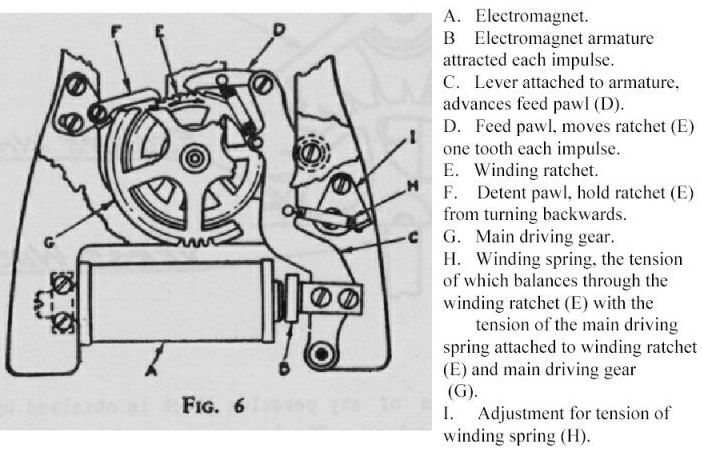ITR, or International Time Recorders to give their full name, made some truly beautiful examples of Master Clocks. I recently acquired this one after having looked for this particular model for quiet a while.
The one thing everyone looks at on a clock is always the face and I have always considered that the early ITR clocks possess the most stylish face of all, thanks to the combination of very slender hands and the distinctive 'font' that is used.

Go To The Dial Page
This particular clock was probably made in the late 1930's or early 1940's as soon after the dial face changed to a more conventional style, whilst the cases were given the Art Deco style.
The ITR company was actually part of IBM when this clock was made. This means that if this clock had been made for the American market it would have been an easy job to date it exactly, as IBM have a website devoted to their early clocks and time recorders etc, which lists the serial numbers against the years of manufacture. However these records do not appear to be valid for the European made clocks.
The clock itself stands a mighty 64 inches, or 5 foot 4 inches, tall (1.625m) and is not unsurprisingly rather heavy. This is due mostly to the 5/8 inch thick Oak case (the backboard however is made from 5 ply to avoid warping). The width is 20 inches, which is twice that of most other master clocks. These are also far removed from most others, in their mode of operation, as they have a conventional clock movement that uses a Graham deadbeat escapement. They do not however have the winding arrangement of a 'conventional' clock, in which the user would wind the clock periodically. Instead these movements have a spring which is only capable of driving the clock for several hours before it would stop if it were not rewound. The reason for this is that these clocks use a remontage system where the winding is done by an electro-magnet.
What happens is that at 58 seconds past each minute (or 2 seconds before the next minute) a cam operates a pair of contacts that, via a relay, energize an electro-magnet. This magnet has a pawl which engages with the barrel of the spring and turns it, thus rewinding it.
The whole affair is designed so that with each magnet operation it is capable of putting just a bit more tension back into the spring than has actually been used in the last 58 second cycle. This is because after a power cut the magnet must be able to rewind the spring fully.
As the magnet is operated for only 2 seconds in each minute it can only fully wind the spring over an extended period of many minutes, adding an extra bit of tension each time. This is because there is not sufficient movement of the pawl on each magnet operation to wind the spring fully in one go.
To stop over winding of the main spring the pawl has its own retaining spring which it has to pull against each time it is operated. The idea being that once the main spring has enough tension a balance between the two springs occurs, thereby stopping the pawl from continuing to attempt to wind.

Go Here To See: The Movement out of its case
Go Here To See: The Control Unit
Go Here To See: The Dial Closeup






